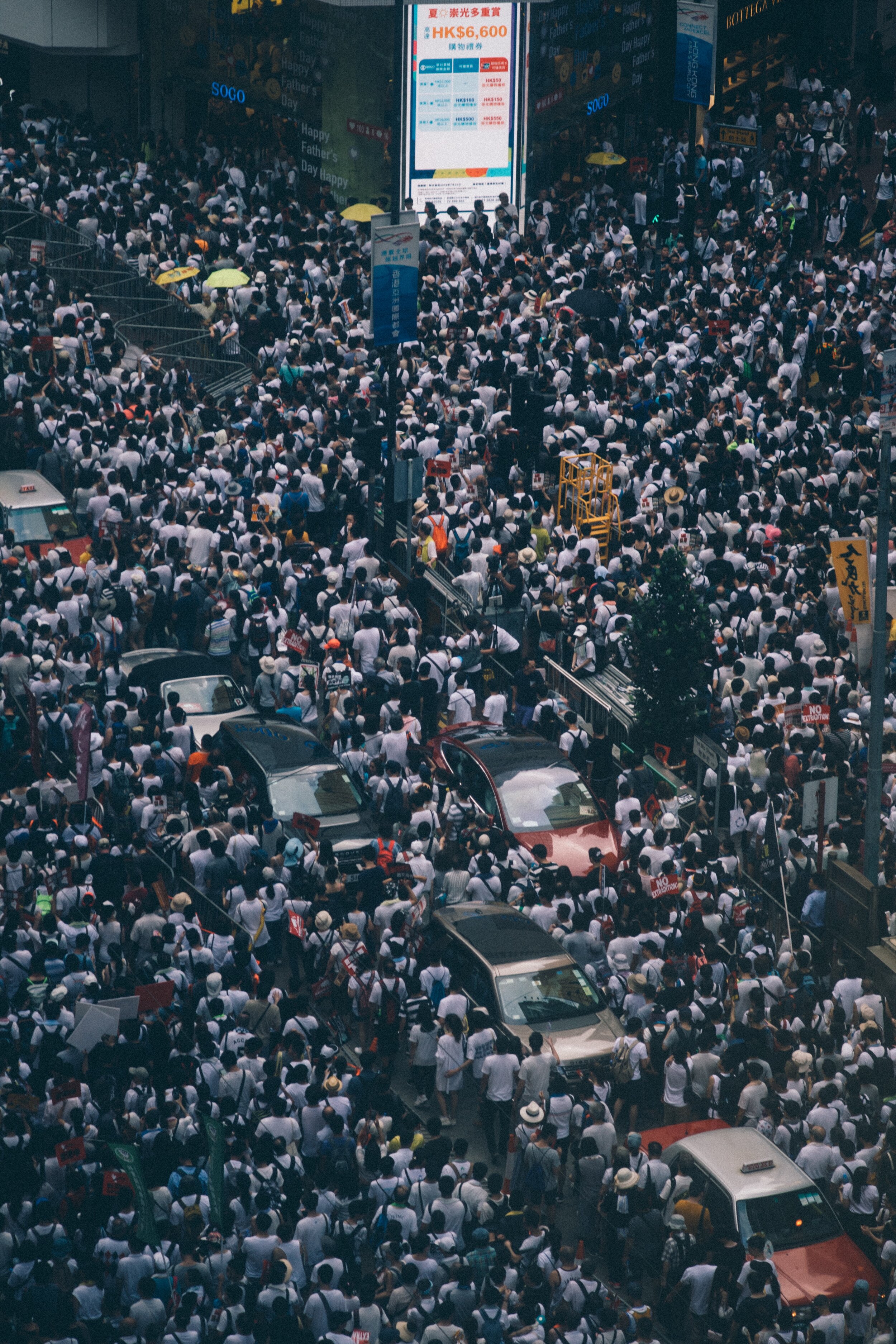What Happened to the Hong Kong Protests?
Photo by Joseph Chan on Unsplash
Photo pas Joseph Chan sur Unsplash
Stefania Rotundu
(FR) Au cours de cette pandémie, la lutte de Hong Kong pour sa démocratie a été mise en arrière-plan de l’exposition médiatique. Pourtant, cette lutte n’est pas terminée. Les manifestations continuent, et la situation s’empire : la situation sanitaire actuelle a permis au gouvernement chinois de mettre en place des mesures antidémocratiques à Hong Kong.
In the middle of the global pandemic, I happened to take a walk on the boardwalk in Toronto. Most people were lying in the sand in small groups or strolling around idly. Admist this scene, I saw a woman walking down the boardwalk holding a cardboard sign which read “Free Hong Kong.” It was then that I remembered that, before the pandemic took center stage, the protests in Hong Kong were big news. For the first time in months, I wondered what ever happened to the protests between the pro-democracy protesters in Hong Kong and the Chinese government.
Hong Kong was formerly a British colony until 1997.[1] The British returned the international finance hub to the Chinese under a special policy known as the “one country, two systems” arrangement, which allowed it to maintain some autonomy from mainland China.[2] This policy allowed Hong Kong to keep special privileges that were denied to citizens on mainland China including free speech, unrestricted access to the internet, and the right to free assembly.[3] Under the Basic Law, Hong Kong has its own constitution with its own laws, system of government, and police force.[4] China had promised Hong Kong that it would keep the Basic Law until at least 2047. [5]
The protests in Hong Kong initially began on June 9th of 2019 with peaceful marches against a bill, introduced in April, that would allow the extradition of criminal suspects to mainland China.[6] Opponents of the bill argued that it would allow the Chinese government to exert more control over Hong Kong by targeting journalists and activists who would then be unfairly tried and subjected to violence in China.[7] When protesters were met with pepper spray, batons, and tear gas from police on June 12th, protests intensified into a broader movement against Hong Kong’s pro-Beijing government, the Hong Kong police force, and the Chinese government.[8] The protesters demanded the retraction of the extradition bill, cessation of characterizing protests as riots, amnesty for arrested protesters, an independent inquiry into police brutality, and the implementation of complete universal suffrage.[9] On September 4th, 2019, the Hong Kong government retracted the extradition bill but refused to meet the other demands, and protests continued.[10]
The Hong Kong protests escalated into mayhem after the death of university student Chow Tsz-Iok, who fell from a parking garage near police action, sparked outrage.[11] The protests culminated in their most violent confrontation in six months when protesters occupied the Hong Kong Polytechnic University in November of 2019.[12] The protesters, holed up inside the university, held the police off with homemade weapons including bows and arrows.[13] When some of the protesters attempted to surrender, Hong Kong police swiftly arrested them and made others inside the university wary of doing the same.[14] The three-day standoff between protesters and police ended when the officers surrounded the campus and arrested 1,100 people.[15] The protests became so violent that Canadian universities called back their students on exchange in Hong Kong over concerns for their safety.[16]
The COVID-19 pandemic had its own impact on the Hong Kong protests; the need for social distancing thwarted public assembly and gave Beijing an opportunity to expand its control over Hong Kong. On June 30th, 2020, the Chinese government passed a unanimous national security law for Hong Kong that bypassed its local legislature.[17] The law calls for maximum life sentences for those found guilty of “separatism,” “subversion,” “terrorism,” and “collusion with foreign forces.”[18] Amnesty International has criticized the law because it is “dangerously vague” and could be used to interpret virtually anything as a national security threat.[19] On July 31st, 2020, the Hong Kong government, run by chief executive Carrie Lam, who is known for being pro-Beijing, announced it would delay the legislative council elections on September 6th for a year due to the COVID-19 pandemic.[20]
As of September 2020, Hong Kong is still protesting. In late August, calls began circulating for people to march against the national security law and the postponement of local legislative elections.[21] Thousands responded to these calls and marched on the streets despite the deployment of riot police and roadblocks.[22] The protesters are challenging the Chinese government’s decision to postpone the elections in Hong Kong that would have given them a chance to express their pro-democracy views. The national security law virtually outlaws most actions of the pro-democracy movement, yet protesters in Hong Kong continue to risk their lives for their democratic and autonomous dreams.[23] Although it is illegal under the national security law, which classifies it as sedition, protesters chant “liberate Hong Kong.”[24] Their chants can be heard here in Toronto.
While some people ignored the woman holding the sign on the boardwalk, others stopped to ask her about it. It is encouraging to see that the world is still listening to the voices of pro-democracy Hongkongers even in the midst of a pandemic.

